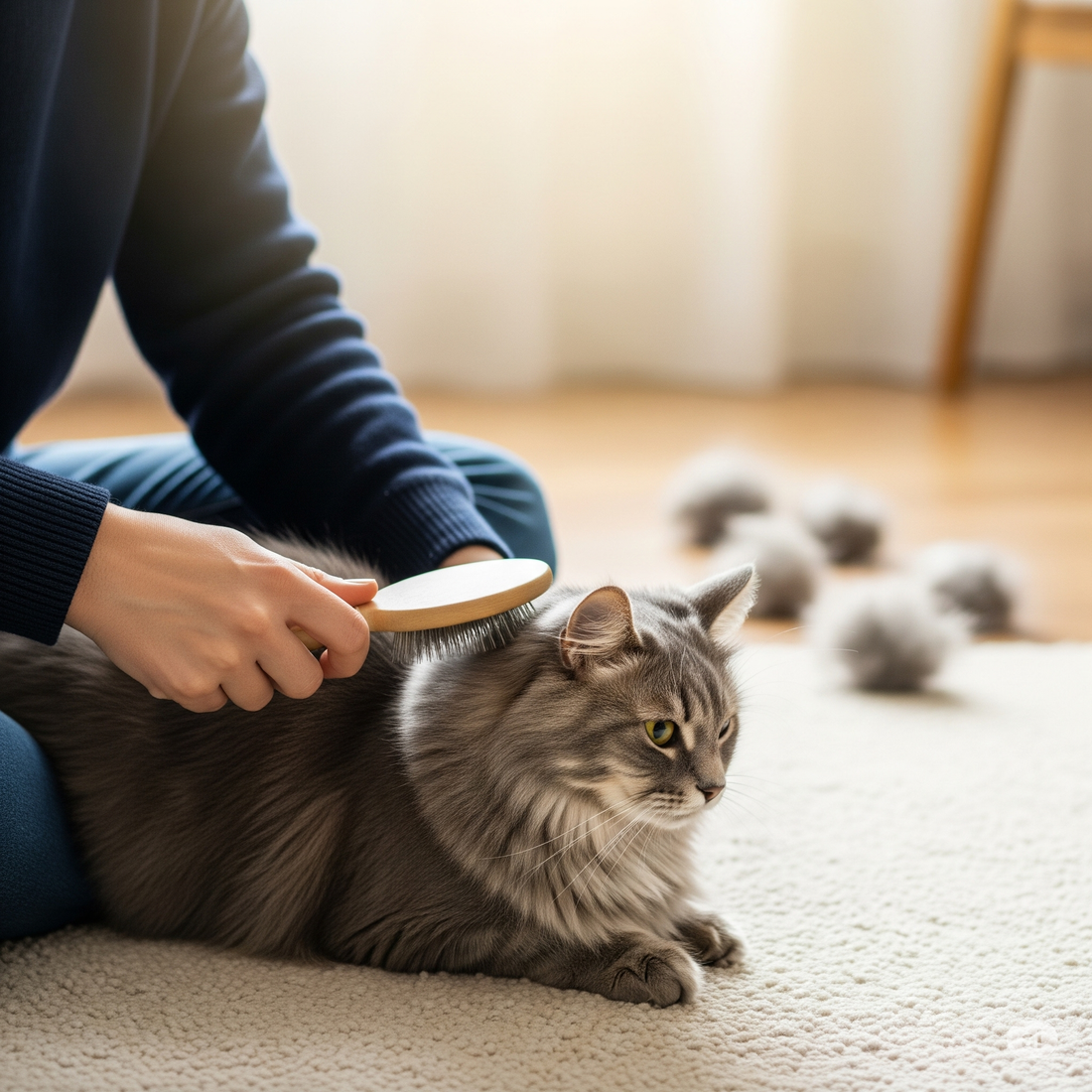
How to Reduce Shedding and Keep Your Home Clean with Cats
Share
Every cat owner knows the struggle—no matter how much you love your feline companion, the endless tumbleweeds of fur drifting across your floors can test your patience. From black pants that mysteriously turn gray to finding cat hair in places no cat has ever been (how did it get inside the refrigerator?), shedding is an unavoidable part of life with cats. But while you can't stop the natural process completely, you can dramatically reduce the amount of fur floating around your home and make cleanup far more manageable. The secret lies in a multi-pronged approach that addresses the issue from your cat's diet down to your vacuuming routine.

Tired of Cat Hair Everywhere? Proven Ways to Reduce Shedding and Keep Your Home Clean
First, it's important to understand why cats shed so much in the first place. That luxurious coat isn't just for show—it serves as insulation, protection from the elements, and even a mood indicator (raised hackles during fear, smooth fur when relaxed). Cats shed year-round, with seasonal peaks in spring and fall when they prepare for temperature changes. Indoor cats may shed more consistently due to artificial lighting and climate control disrupting their natural cycles. Some breeds like Maine Coons and Persians are walking fur factories, while shorthaired cats aren't necessarily less work—their finer hairs often weave deeper into fabrics. Health issues like allergies, skin conditions, or stress can also increase shedding, so sudden changes warrant a vet visit.
Nutrition plays a surprisingly large role in shedding control. Cats fed low-quality diets often develop dry, flaky skin and brittle fur that sheds excessively. Look for foods rich in omega-3 and omega-6 fatty acids—these healthy fats improve skin health and coat quality from the inside out. Many cat owners report significant reductions in shedding after switching to foods containing fish oil, flaxseed, or specialized skin and coat formulas. Hydration matters just as much; cats drinking insufficient water produce oilier skin and looser fur. Consider adding wet food to their diet or investing in a cat water fountain to encourage drinking. Some supplements like biotin can help, but always consult your vet before adding anything new to your cat's regimen.

The single most effective weapon against household fur is regular grooming. Think of brushing as preventative maintenance—every hair you capture in the brush is one that won't end up on your sofa. For shorthaired cats, a rubber grooming glove or bristle brush used 2-3 times weekly works wonders. Longhaired beauties need daily attention with a slicker brush and possibly a de-shedding tool like the Furminator to prevent mats and hairballs. Start sessions short and positive, gradually increasing time as your cat accepts the routine. Many cats grow to enjoy grooming, especially if paired with treats or lap time. Pay special attention to trouble spots like the hindquarters and underarms where loose fur collects.
Bathing may seem extreme for famously self-cleaning animals, but occasional baths (every 4-6 weeks) can dramatically reduce shedding for tolerant cats. Use lukewarm water and a mild cat shampoo to avoid stripping natural oils. The bath itself loosens dead hair, while the blow-drying process (on low heat if you must) removes astonishing amounts of undercoat. For water-averse felines, waterless shampoos or grooming wipes offer a compromise. Always follow wet grooming with thorough drying—damp fur sheds more and can cause skin issues.

Your home environment significantly impacts shedding levels. Dry air causes static that makes fur fly everywhere, so running a humidifier during winter months helps fur stay put. Providing designated sleeping spots with washable blankets or cat beds gives fur a centralized landing zone instead of spreading across all your furniture. Strategic placement of washable throws on favorite napping spots makes cleanup simple—just shake them out weekly. Some cats even tolerate wearing a soft "shedding vest" that catches loose fur before it escapes into your environment.
Cleaning strategies need to evolve when living with heavy shedders. The right tools make all the difference: a rubber broom miraculously gathers fur from carpets, a slightly dampened sponge glove picks up stray hairs from upholstery, and a robot vacuum running daily prevents buildup. Lint rollers are fine for clothing emergencies, but investing in a reusable fur remover like the ChomChom roller saves money and works better. Wash bedding and cat furniture covers weekly in hot water to break down oils that make fur cling. For extreme cases, air purifiers with HEPA filters capture floating hairs and reduce allergens.
Some innovative products can help manage the onslaught. Self-cleaning brushes like the Lickimat Silicone Groomer allow cats to remove loose fur themselves while licking. Grooming gloves let you pet away fur during normal cuddle sessions. Even your cat's scratching post plays a role—regular scratching removes dead outer claw sheaths and loosens old fur from their coat.

When shedding seems excessive despite your best efforts, consider underlying causes. Stress from changes in routine, new pets, or health issues can trigger increased shedding. Allergies to food or environmental factors often manifest through skin and coat problems. Senior cats may groom less effectively, requiring more human assistance. Certain medications or medical conditions like hyperthyroidism can also affect coat quality. If you notice bald patches, red skin, or behavior changes along with increased shedding, schedule a veterinary checkup.
Living with cats means accepting some level of fur as part of your home's ambiance, but it doesn't have to control your life. By combining good nutrition, consistent grooming, smart environmental controls, and strategic cleaning, you can reduce visible shedding by up to 90%. The bonus? All that brushing and bonding improves your relationship with your cat while keeping them more comfortable and healthy. Soon you'll spend less time battling fur and more time enjoying what really matters—those purring, furry snuggles that make all the cleanup worthwhile.
